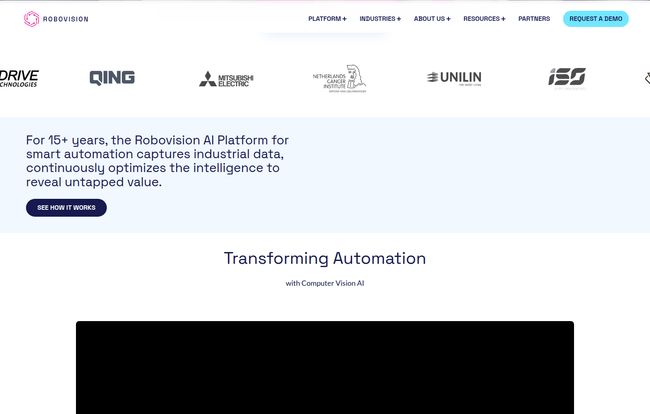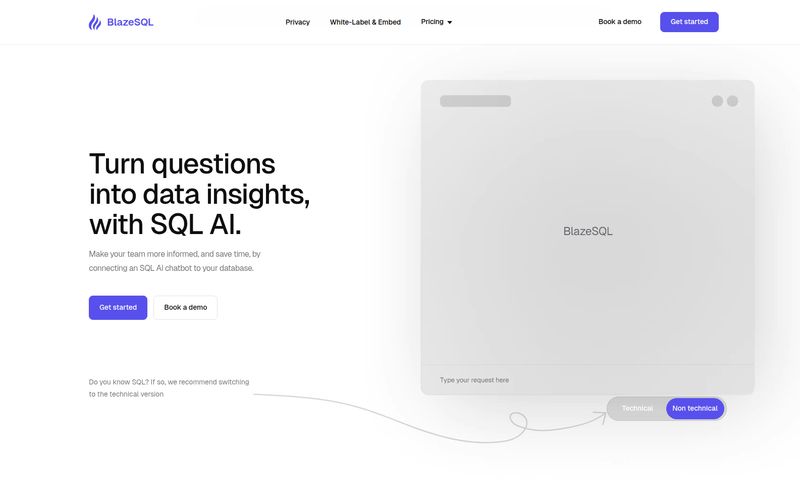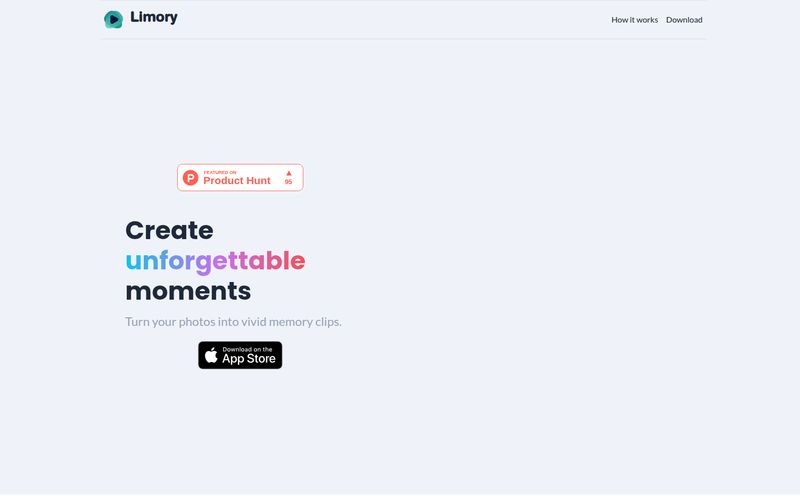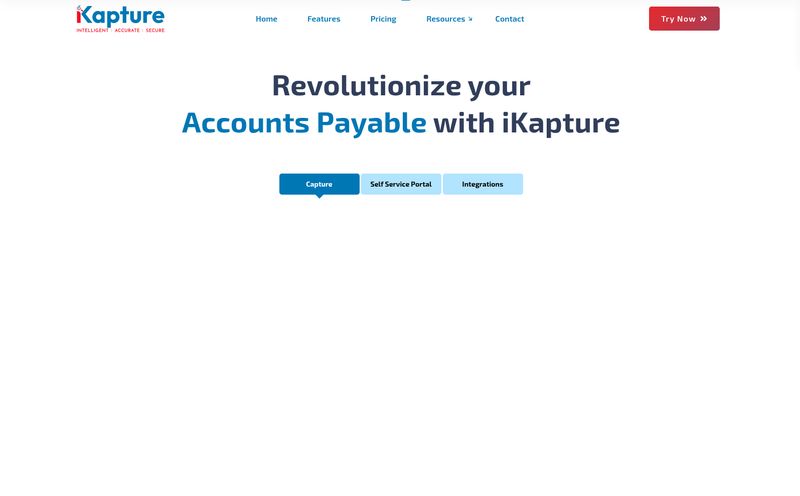I’ve been in the SEO and digital trends game for a long time, and I’ve seen countless platforms promise to “revolutionize” industries. It’s a word that gets thrown around so much it’s almost lost its meaning. But every now and then, something comes along that makes me sit up and pay a little more attention. Recently, that something has been Robovision.
I’ve worked with clients in the manufacturing and agricultural sectors, and their biggest headache is always the same: implementing cutting-edge tech without needing an army of PhDs in machine learning. They hear about AI and computer vision, they see the potential, but the barrier to entry feels like a brick wall. So when a platform claims to offer a “user-friendly no-code” solution for industrial automation... my professional skepticism kicks in, but so does my curiosity.
Is this another overhyped tool, or is it genuinely a game-changer for businesses that want to get smarter, faster? Let's get into it.

Visit Robovision
So, What is Robovision, Really?
In a nutshell, Robovision is a platform designed to manage the entire lifecycle of a computer vision AI model. Think of it like this: if you want to build a house, you need an architect, a construction crew, an interior designer, and a project manager. Robovision aims to be all of those things, but for teaching a machine how to see and make decisions.
It’s not just about building one AI model. The platform is designed to help you develop, deploy, and continuously adapt your AI. This is huge. In the industrial world, things change. Lighting conditions on a factory floor shift, a new type of vegetable appears on the conveyor belt, product packaging gets a redesign. A static AI model becomes dumber over time. Robovision is built on the idea that your AI should learn and grow with your business, not become a digital fossil.
They handle the whole pipeline, from importing your visual data (the pictures and videos your AI will learn from) all the way through to deploying the finished model on your hardware. It’s an end-to-end approach that a lot of companies desperately need.
The Big Deal: No-Code and Empowering Your Team
The whole 'no-code' thing gets thrown around a lot, and honestly, most of the time it's just marketing fluff. But from what I've gathered, Robovision seems to be taking it seriously. Their goal is to empower the people who actually know the job best—the operators on the factory floor, the agricultural experts in the field—to help build and maintain the AI.
This is a fundamental shift. Instead of a programmer in a dark room trying to understand the subtle difference between a ripe and an unripe tomato from a dataset, you can have a horticultural expert directly label and curate the images. This dramatically reduces the feedback loop and, in my experience, leads to much more accurate and practical AI models. It’s about putting the power in the hands of the domain experts, not just the coders.
Faster Time to Market. Seriously.
One of the most painful parts of any custom AI project is the timeline. It can take months, even years, to go from concept to a working model. By providing a streamlined, visual interface and pre-built tools, Robovision helps companies slash that development time. This means you can get your smart-sorting machine or your quality-control camera up and running faster, which means you see a return on your investment sooner. For any operations manager, that's music to their ears.
Scalability Is Not an Afterthought
I’ve seen it happen before: a company builds a brilliant AI proof-of-concept for one machine. It works beautifully. But when they try to roll it out to 50 machines across three factories? The whole thing collapses. It wasn’t built to scale.
Robovision seems to have baked scalability into its DNA. The platform is designed to go from a single, simple deployment to a massive, interconnected system. They claim over 1,000 deployments across six continents, with partners like Mitsubishi Electric and Unilin. You don't get that kind of footprint without a robust, scalable architecture. It gives you confidence that you’re not just buying a tool for today, but an infrastructure for the next five to ten years.
A Look Under the Hood at its Core Capabilities
Robovision’s approach is structured and logical. They break the AI lifecycle down into clear steps, which is incredibly helpful for project managers trying to map out a new automation initiative. Let’s compare their process to a traditional, code-heavy approach.
| AI Development Stage | Traditional Approach | The Robovision Approach |
|---|---|---|
| Data Management | Cobbling together scripts and cloud storage; often messy and inconsistent. | Integrated data import, annotation, and curation tools within one platform. |
| Model Training | Requires deep learning experts writing complex Python code (TensorFlow, PyTorch). | A no-code/low-code interface where you configure and train models visually. |
| Deployment | Complex process of containerization, server management, and creating APIs. | Flexible deployment options (Cloud, On-Premise, Hybrid) managed through the platform. |
| Maintenance | Ad-hoc retraining and redeployment. A huge manual effort. | Built-in tools for continuous monitoring, optimization, and retraining. |
This structured workflow removes so much of the guesswork. You’re not reinventing the wheel; you’re following a proven path to success.
Let's Talk Money: The Robovision Pricing Model
Okay, here’s where things get a little… opaque. If you go to the Robovision pricing page, you won’t find a neat little grid with a “Basic,” “Pro,” and “Enterprise” plan. This is pretty standard for high-level B2B and enterprise software, but it's still a bit of a hurdle. You have to fill out a form and “Request Pricing.”
While I can’t give you a dollar amount, I can break down how they structure their pricing, based on their site. It’s a “pay as you grow” model based on three main components:
- Platform License: This is your entry ticket. It gives you access to the core platform where you build, train, and manage your AI models. Think of it as the license for your AI workshop.
- Inference Licenses: This is a big one. You pay for the models that are actually running and doing work (making “inferences”). The cost likely depends on the complexity of the model and how many you have deployed. It's a usage-based component.
- Deployment Options: You choose where the AI runs—in the cloud, on your own servers (on-premise), or a mix of both (hybrid). Each of these will have different cost implications. Cloud is often easier to start with, while on-premise gives you more control over data and security.
My take? While the lack of transparency is a minor annoyance, this custom pricing approach probably makes sense. An AI system for sorting apples is vastly different from one that inspects microchips. A one-size-fits-all price wouldn’t work. Be prepared to have a detailed conversation with their sales team about your specific needs.
The Not-So-Shiny Bits: A Realistic Look
No platform is perfect, and it’s important to go in with your eyes open. Based on the nature of this tech, here are a few things I’d be mindful of:
- The Setup Hurdle: Even with a no-code platform, there’s an initial effort. You still need to gather and import your data. If your data is a mess, disorganized, or of poor quality, the platform can’t magically fix that. The old saying “garbage in, garbage out” is doubly true for AI.
- Data Quality is King: The performance of your AI models will be directly tied to the quality of the visual data you feed it. Robovision provides the tools, but teh responsibility for providing clear, representative images and videos falls on you.
- It's Not Magic: While it empowers non-coders, you still need someone with a logical, process-oriented mindset to manage the projects. You can't just hand it over to a complete novice and expect amazing results without any guidance or training. There's still a learning curve, albeit a much gentler one.
So, Who Is This Actually For?
Robovision isn't for the blogger who wants to automatically tag their vacation photos. It’s a heavy-duty industrial tool. Based on their case studies with clients like ISO Horti Innovators and Eurocircuits, it’s clear they excel in a few key areas:
- Agriculture: Automating tasks like picking, sorting, and grading produce. Imagine a machine that can identify and pot plants or check for ripeness with superhuman accuracy.
- Manufacturing: Quality control, defect detection, and robotic guidance on assembly lines. This is classic computer vision territory, and Robovision provides a powerful engine for it.
- Machine Builders: Companies that build automated machinery for other businesses are a prime audience. Robovision can serve as the “brain” inside the machines they sell.
If you're in one of these industries and feel like you're hitting a wall with traditional automation, Robovision is likely worth a very close look.
Frequently Asked Questions
Is Robovision truly a no-code platform?
It's more accurate to call it a no-code/low-code platform. For many standard applications, you can absolutely build and deploy a model without writing a single line of code. However, it also offers the flexibility for developers to add custom code and integrations for more complex or unique problems, giving you the best of both worlds.
What kind of hardware do I need?
This depends on your deployment choice. For on-premise deployment, you'll need servers with sufficient processing power, often including GPUs (Graphics Processing Units) which are essential for running AI models efficiently. If you opt for cloud deployment, Robovision manages the hardware for you. They emphasize hardware compatibility, so they likely work with a range of common industrial cameras and computers.
Can I deploy Robovision on my own servers?
Yes. They explicitly offer on-premise and hybrid deployment options. This is critical for industries with strict data privacy and security requirements, where sending sensitive operational data to the cloud isn't an option.
How does the “continuous optimization” work?
This is one of the coolest features. As your deployed AI model encounters new situations or makes mistakes (e.g., misclassifying a product), that new data can be fed back into the platform. You can then use this data to easily retrain and improve the model, then push the update. It creates a continuous improvement loop, making your AI smarter over time with real-world feedback.
What industries use Robovision the most?
Their primary focus seems to be on industrial applications. Agriculture (horticulture, crop monitoring) and Manufacturing (quality control, robotics) are the most prominent examples on their website. They also mention medical add-ons, suggesting a presence in the life sciences or medical imaging fields.
My Final Verdict
After digging into Robovision, I’m genuinely impressed. They seem to have a clear understanding of the real-world problems facing industrial businesses. They’re not just selling AI; they’re selling a streamlined process, scalability, and a way to empower existing teams without forcing them to become data scientists overnight.
The platform isn’t a magic wand, and the custom pricing model requires you to engage with them directly. But for a medium-to-large scale industrial company looking to make a serious investment in smart automation, Robovision feels like a top-tier contender. It strikes a rare balance between power and usability, and that's something worth getting excited about. If you're in their target market, requesting a demo seems like a no-brainer.
References and Sources
- Robovision Official Website
- Robovision Platform Pricing Information
- Success Story: ISO Horti Innovators



